-
Car Reviews
- All reviews
- Midsize SUVs
- Small cars
- Utes
- Small SUVs
- Large SUVs
- Large cars
- Sports SUVs
- Sports cars
- Vans
Latest reviews
- Car News
-
Car Comparisons
Latest comparisons
- Chasing Deals
It’s a flagship grade wearing beefy Brembo brakes and track-ready suspension, yet it carries a price tag that still starts with a ‘4’, so can this enhanced BRZ deliver?
The 2024 update for the Subaru BRZ has arrived with daft recalls for kinks such as untrustworthy tail-lights now ironed out and previously absent safety features such as autonomous emergency braking (AEB) now sorted.
But the real highlight is the subject of today’s review: the addition of the tS grade that sits above the base and ‘S’ grades with a list of changes including a polite tinkering within the interior all the way to more serious mechanical upgrades to the brakes and suspension.
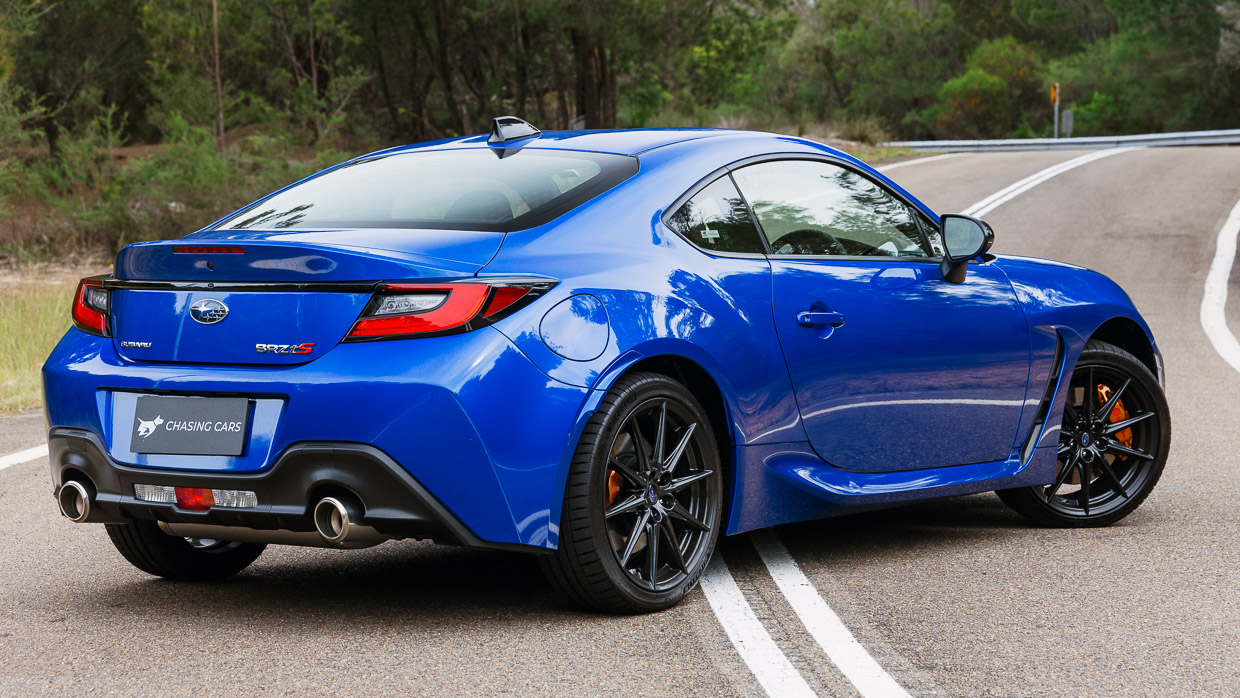
The tS was a much-loved version of the previous BRZ, and it too has matured – dropping the strange little spoiler and other aero dressings for a much cleaner look; all for the better in our view.
Notably, Toyota will be introducing similar upgrades for its GR86 later this year, though this will be available as a performance package for the GTS rather than a standalone grade.
Subaru’s gradual introduction of basic safety equipment such as AEB (along with lane keep assistance and adaptive cruise control) to manual models is a welcome move but comes at a cost, with the three-pedal BRZs rising by $3500.
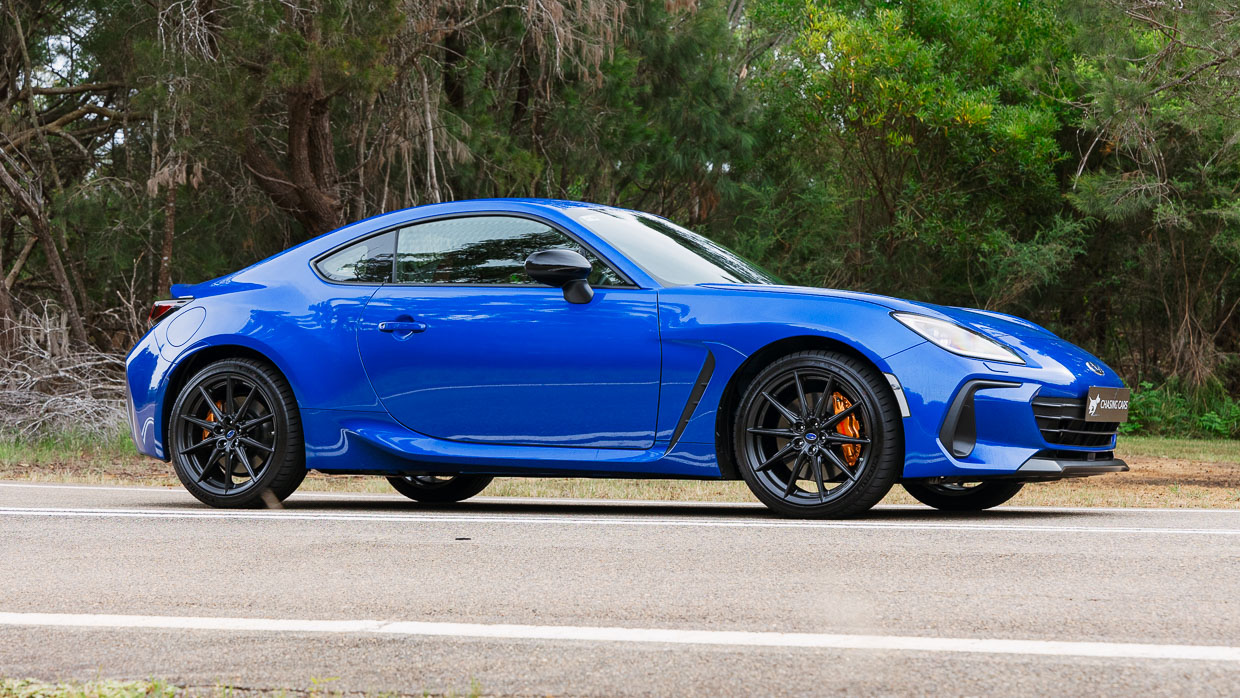
Furthermore, the upgrades seen to this tS grade aren’t free, with the flagship attracting a $3600 upcharge on the now mid-spec S with prices starting at $48,690 for the manual, or from $49,690 if you don’t want to go DIY.
In 2022 we declared the second-generation BRZ a deeply impressive vehicle that added greater maturity to the involving dynamics of its predecessor while remaining affordable.
As the BRZ’s asking price creeps closer to more serious hot-hatch territory, however, can the tS grade improve Subaru’s sports-coupe formula?
Much of what is available on the tS is also equipped on the S grade, which is outlined below:
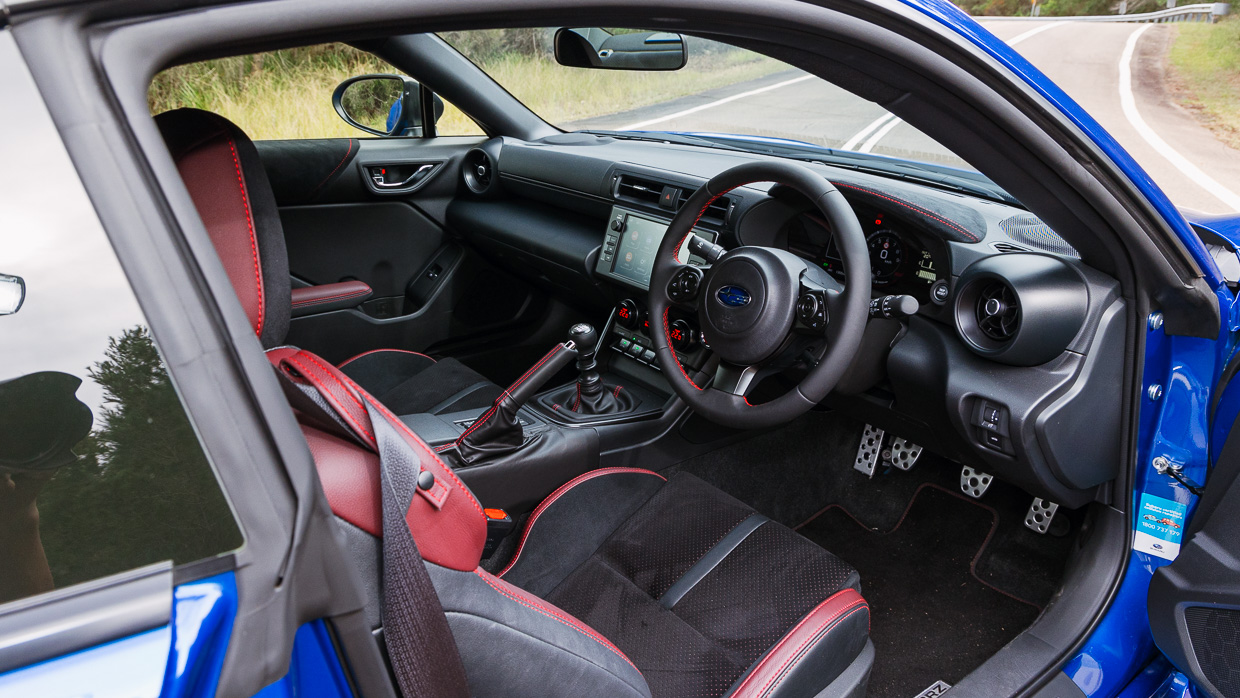
The tS either adds, or swaps in, the following:
Before we dive into what’s changed, let’s first touch on what hasn’t: the engine.
Surprised? You shouldn’t be.
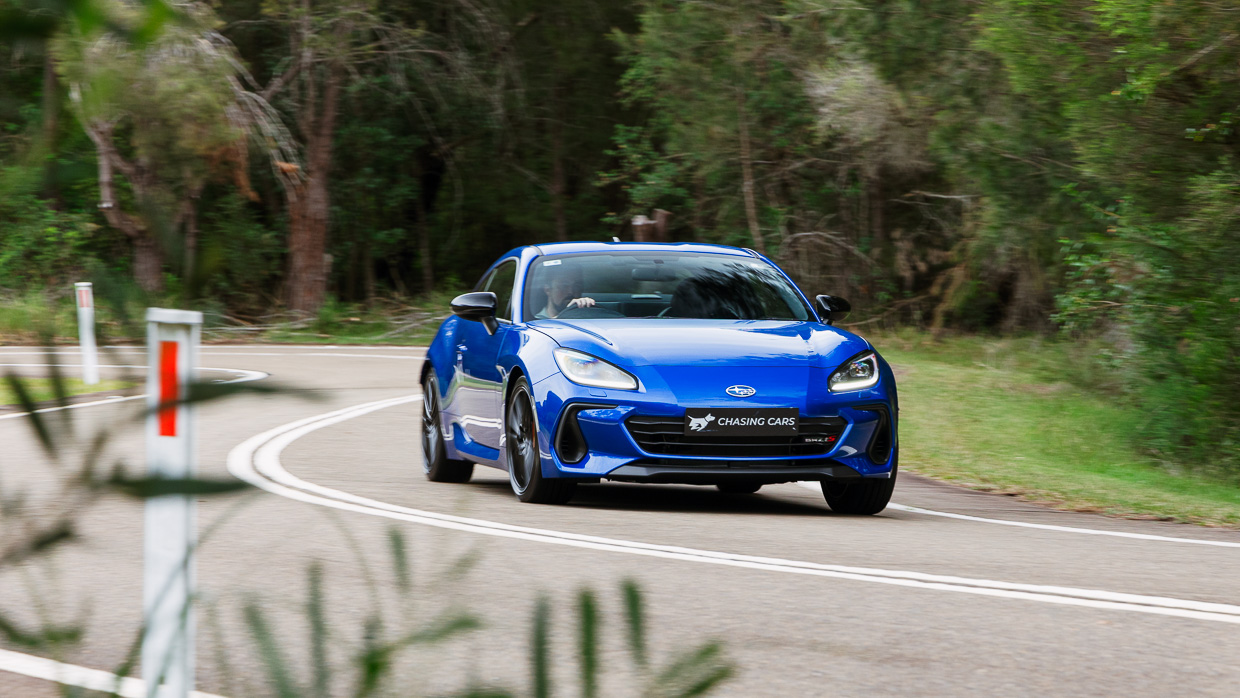
The Toyota/Subaru coupe partnership has shown the pair are consistently and positively allergic to increasing the outputs of the standard engine with a turbocharger or even a simple tune.
It’s not a great tragedy necessarily, and of course many owners will continue to make a beeline for aftermarket mods
The 174kW/250Nm 2.4-litre four-cylinder is terrific, bringing improved responses and generally better all-round driveability over the original BRZ’s 2.0L.
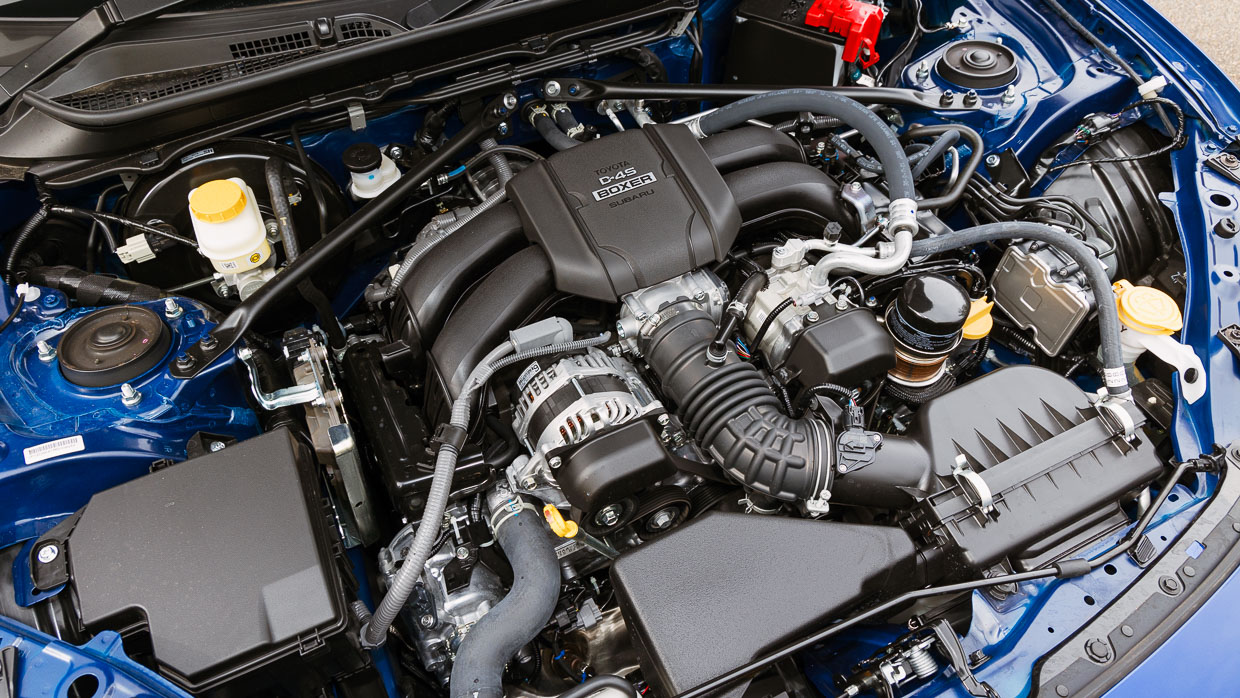
The synthesised engine noise won’t be to everyone’s taste and the response could be a bit quicker to aid snappier heel-toe downshifts. Still, it remains fully fit for the task of pushing the BRZ’s lithe 1235kg kerb weight around your favourite b-road or a slow/medium-speed track.
It would still be great to see a BRZ fitted with the WRX’s 202kW/350Nm turbocharged 2.4-litre flat-four relative, though the BRZ’s price would undoubtedly increase along with those outputs.
Subaru instead aims to earn its $3600 upcharge in other areas, starting with the suspension. Hitachi Astemo shock absorbers have been fitted upfront while the rear suspension setup is a modified version of the existing one found in the normal BRZ.
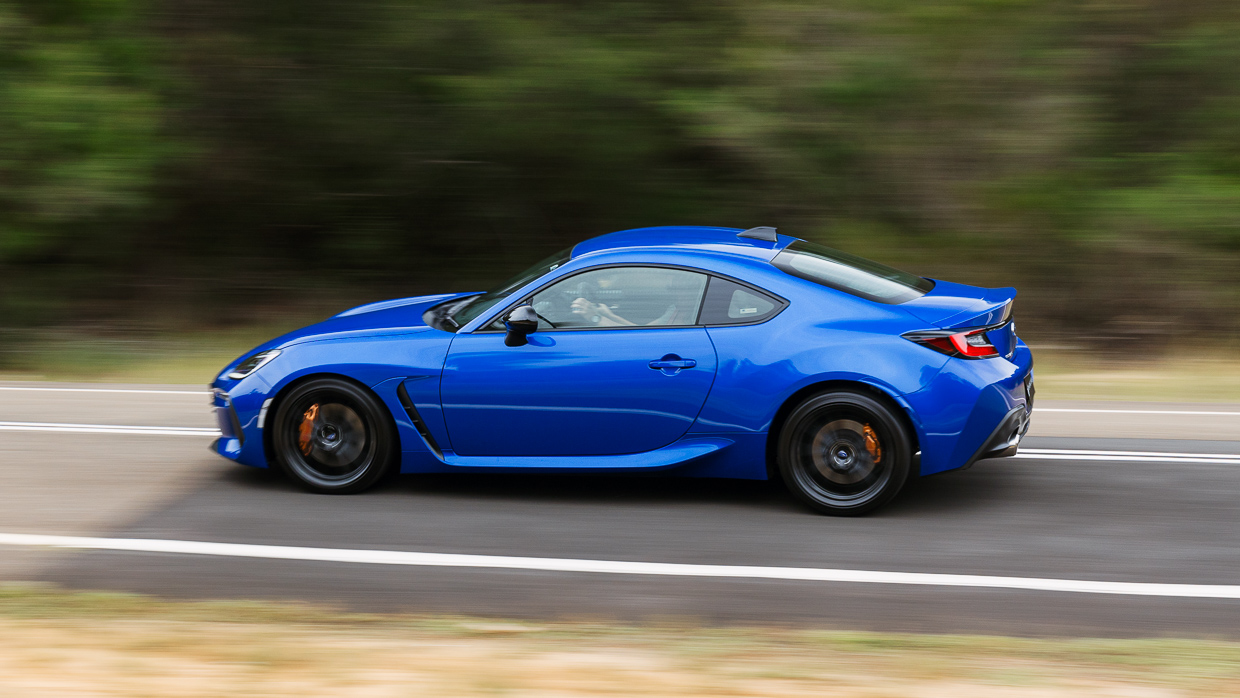
The stated goal here is to grant the BRZ extra dynamic capability without trading on comfort, and for the most part this has been achieved.
I’m one of the Chasing Cars test-team members who’s preferred the slight oversteering bias of the GR86 over the comparatively more understeer-biased Subaru, yet the tS setup narrows this margin to a considerable extent with sharper turn-in, better body control, and a more lively rear axle if you follow through on the power.
This new spike of attitude doesn’t come entirely at the expense of the regular BRZ’s lush compliance and forgivability. We reckon the trade-off seems more than agreeable.
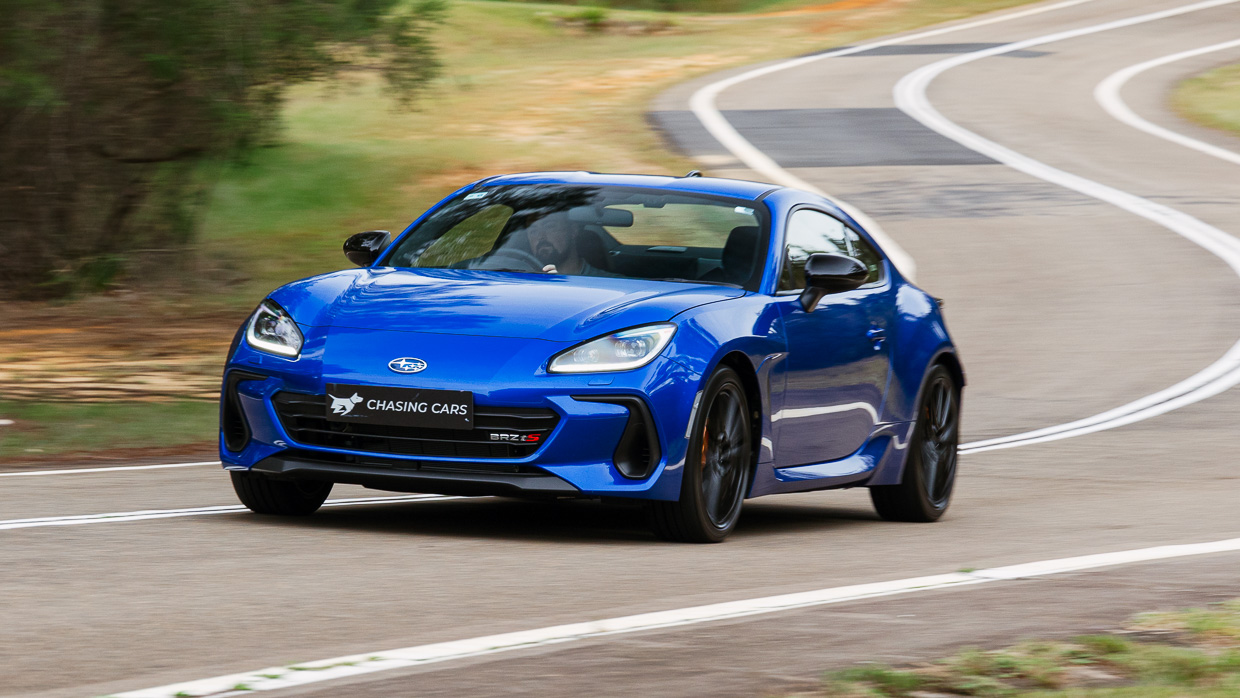
While there’s quite a bit more roughhousing involved for the driver on a typically patchy Aussie country road, the tS still spends plenty of time with its wheels firmly planted. The
The main benefit of the tS package is found in the Brembo brake upgrade. Doubling the piston count to four at the front and two at the rear with 326mm/30mm and 316mm/20mm rotors respectively, the BRZ is now a much more track-ready machine.
The discs haven’t just grown in size, they’ve also expanded in width, which should aid cooling on repeated hot laps – and in our testing the tS’s stopping power was extraordinary.
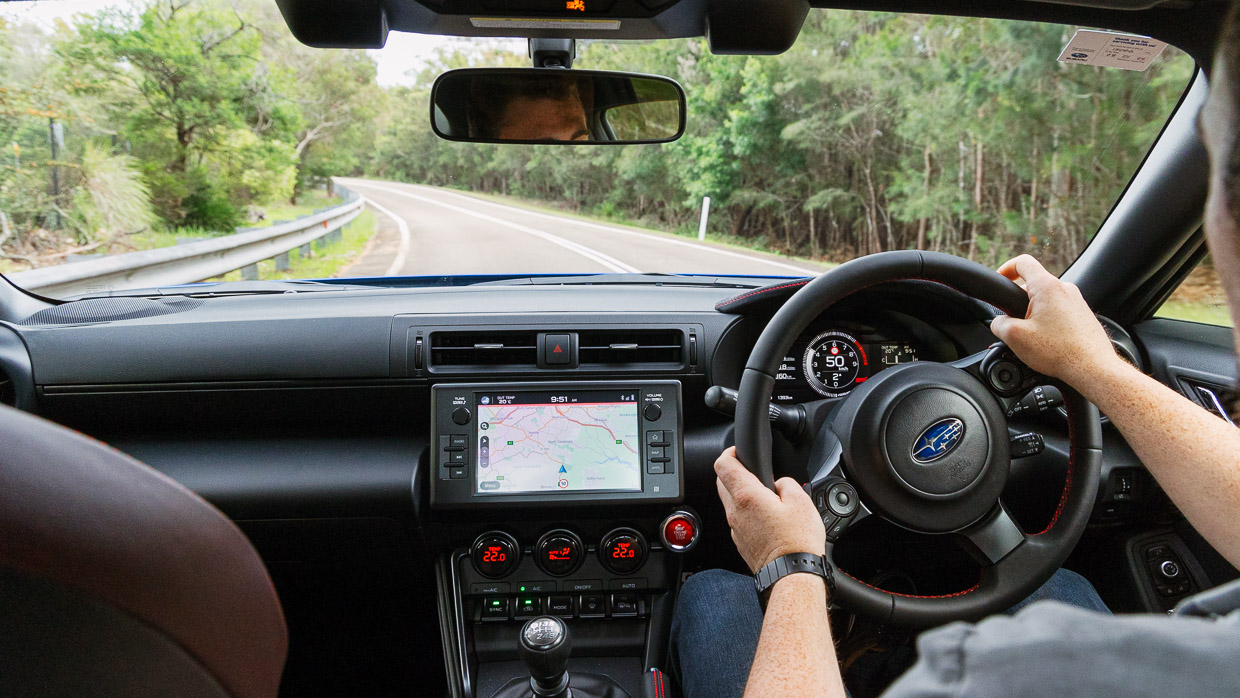
Chasing Cars recorded a 100 to 0 km/h braking distance of 33.81 metres for the flagship BRZ. For reference, we also had a Porsche 911 T on test that same day that recorded a 33.54m stop. For a vehicle less than 10 times the price, a difference of less than 300mm ain’t bad.
This same brake package is also available in the aftermarket world, but our research suggested you’ll be lucky to get the fronts for less than $4500 and that’s before any labour is involved, making Subaru’s $3600 upcharge look like a bit of a bargain.
The tS wears the same Michelin Pilot Sport 4 tyres in a 215mm square stance, which are a great all-round tyre but are definitely another area where Subaru could’ve pushed the envelope harder.
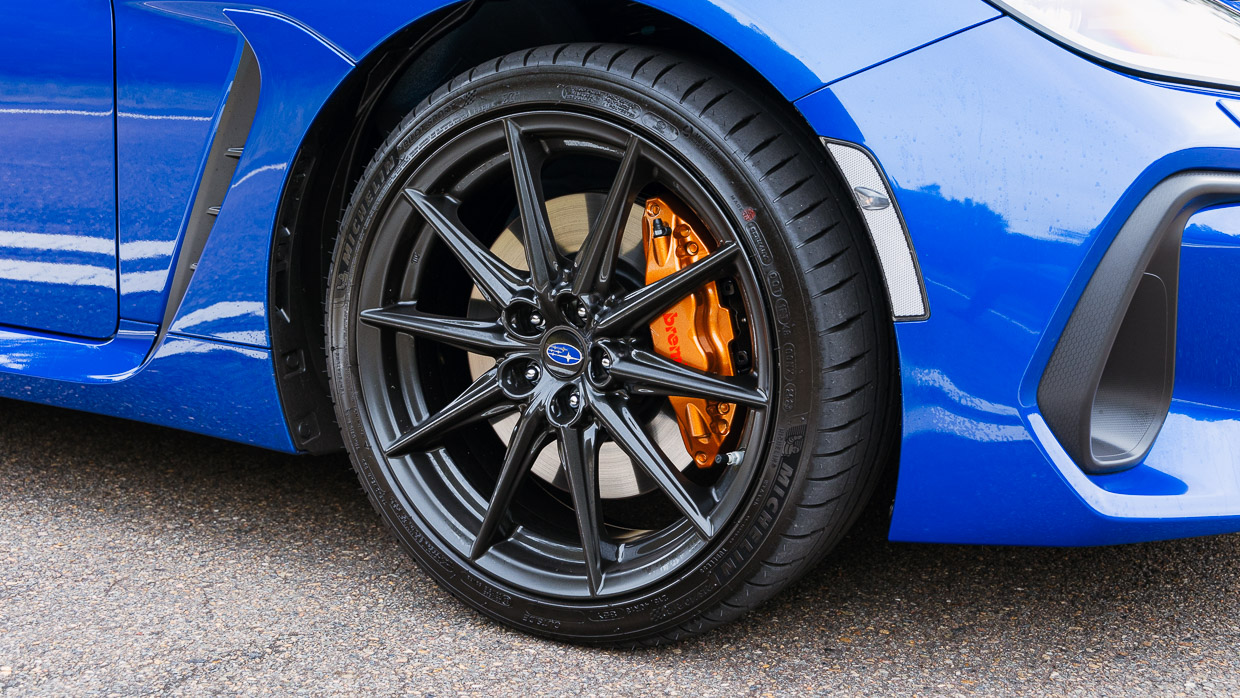
Although we didn’t get a chance to get the BRZ tS out onto the track during our testing, done so previously with the regular BRZ and have no doubt the greater strain placed on the tyres by the increased performance will see owners reaching for new rubber soon enough.
Unfortunately for buyers, taking the BRZ tS out onto the track won’t be simply a matter of driver confidence as there are also warranty considerations to be made, as we’ll discuss in the running costs section of this review.
The interior of the BRZ tS is largely similar to the regular BRZ grades as the money has been diverted elsewhere for the $3600 upcharge but the cabin space still ticks all the basics and throws in creature comforts that make this car nice enough to drive every day.
The seating position is spot on, with a small steering wheel with nice clicky controls, a shifter that falls easily to hand and a handbrake within easy reach for, err, high-speed parking shall we say.
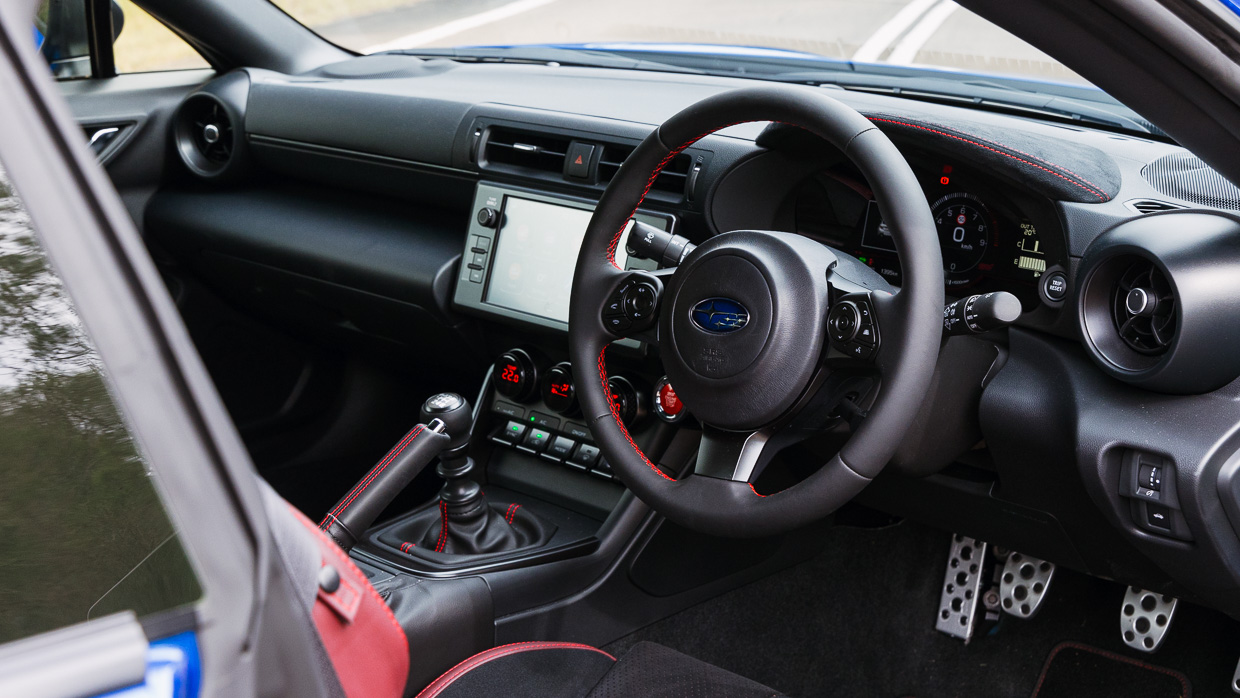
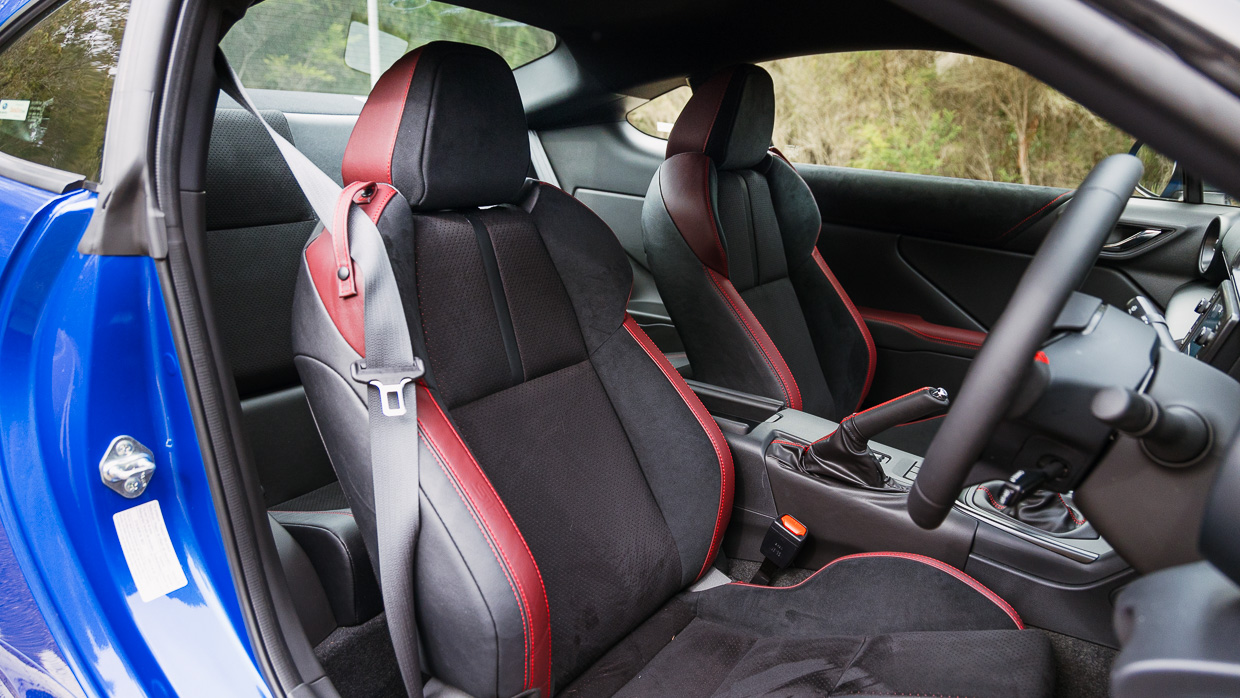
Nicely bolstered seats hug you in place without making you feel like you’re dropping into a bath while you climb through the door and they’re also heatable to boot. At 183cm tall I had room to spare in the BRZ with significantly more headroom than a Mazda ND MX-5, for example.
The tS grade nabs a beautiful dark red colour across the door padding and outer edges of the seat, which are trimmed in a combination of Ultrasuede and leather material, adding a nice touch of flare to the pit of black which makes up the regular BRZ’s cabin colour scheme.
As per the regular BRZ, a 7.0-inch digital driver’s display sits in front of the driver giving a useful selection of mechanical monitoring to keep an eye on vital signs on the track, with a crisp readout to monitor your speed.
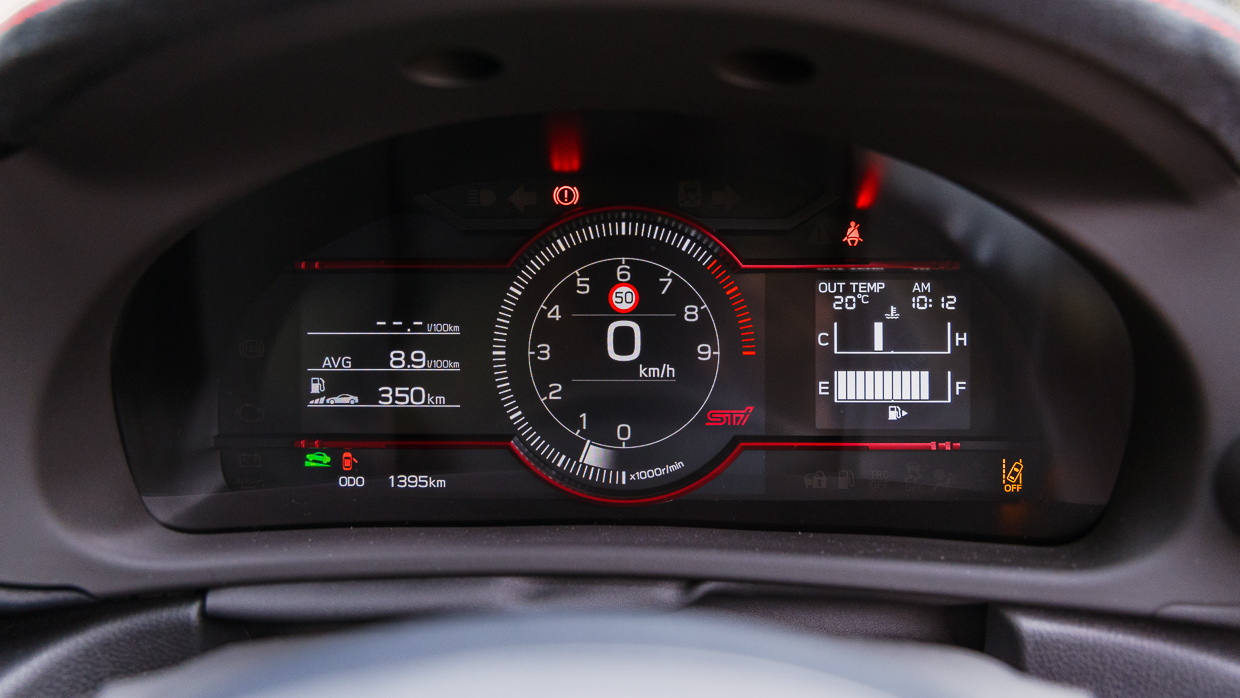
My only bugbear with this display is the addition of an ‘STI’ branding when this is not a genuine STI product, it’s only ‘tuned by STI’ hence the ‘tS’ badging. The difference is small yet important in terms of ethos but let’s move on before we launch into a mini tirade….
An 8.0-inch touchscreen sits in the centre and makes do with wired Apple CarPlay and Android Auto, which I wouldn’t normally complain about in a car at this price point but ergonomic difficulties with the split-fold armrest make it difficult to plug in your phone and close it at the same time.
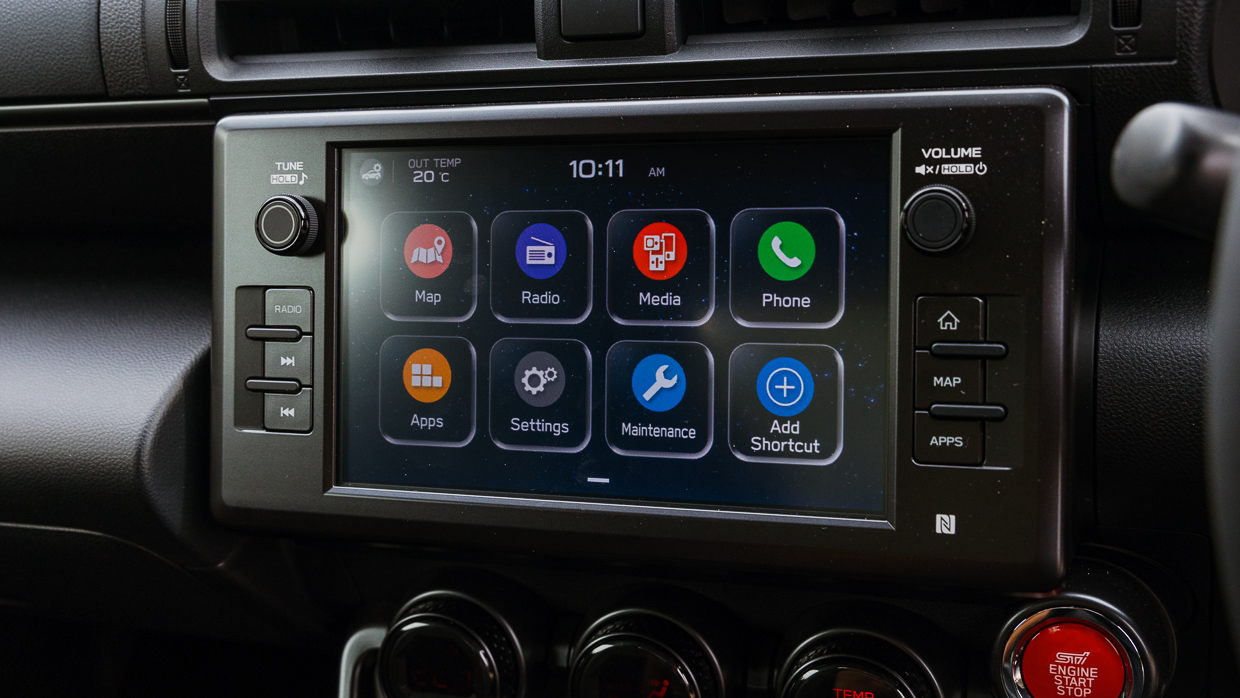
While the backseats aren’t anything to write home about, I’ve had two kids under 10 in these before and you can make it work if you’re looking for a fun car you can share with the whole family if you all squeeze in. Just don’t expect anyone to be comfortable.
There are two Isofix points in each of the outboard seats and top tethers for younger kids as well. More importantly, it’s brilliant that these seats exist at all, unlike in its Mazda rival, making the Subaru a much easier vehicle to live with every day.
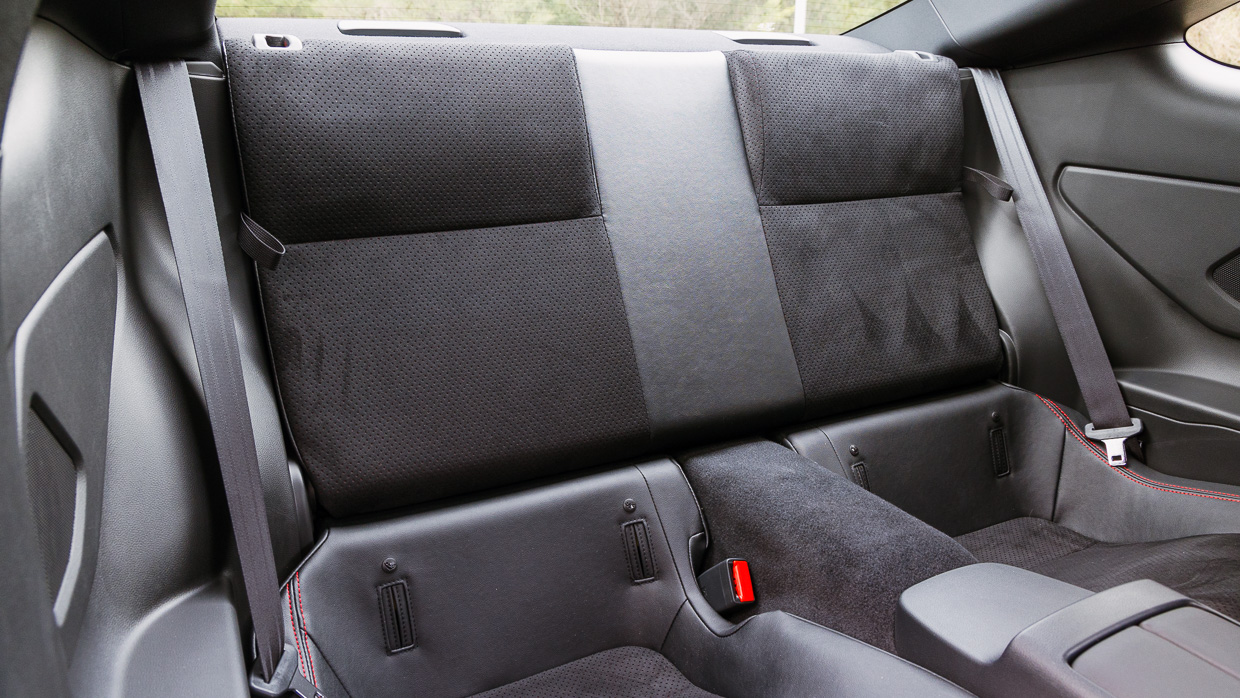
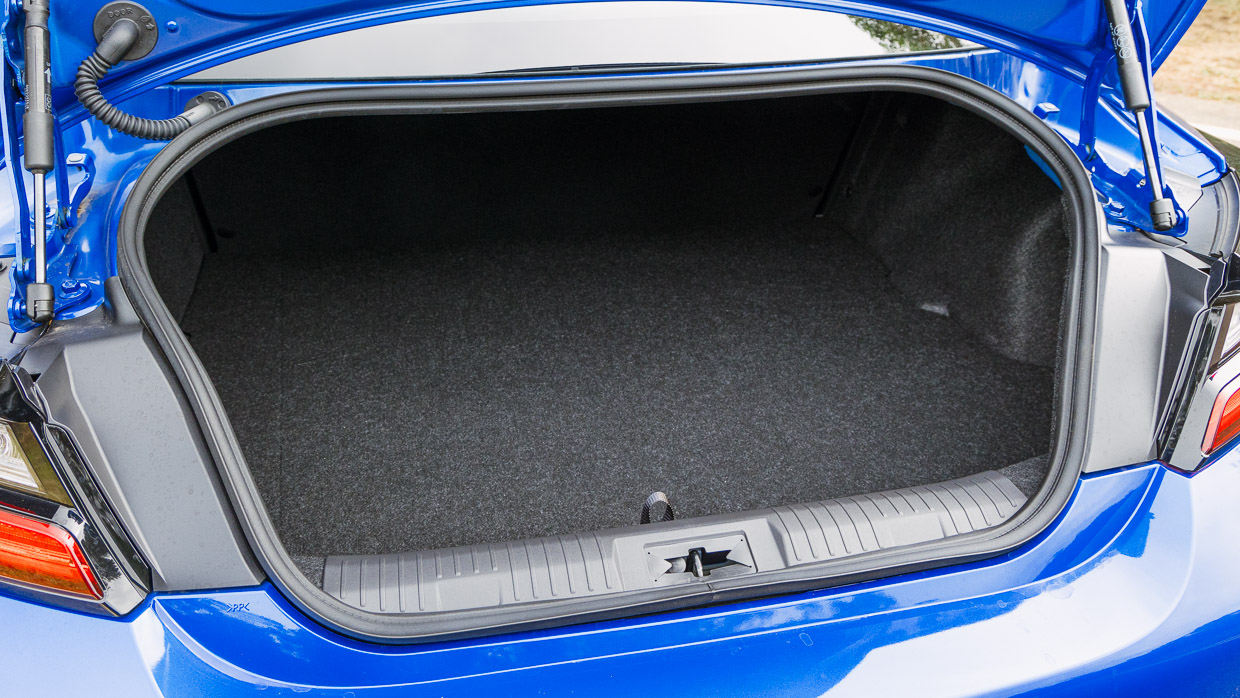
The 201L boot lacks the full-size spare that comes standard on the other BRZ grades and, as a result, the kerb weight drops 15kg. We’d be inclined to ask the dealer to throw that back in for peace of mind for longer road trips.
The backseats can also be dropped as a single bench using pull tabs that you can reach from inside the boot, revealing a completely flat floor that should be able to fit a set of full-size spare rubber on your next track day.
Back in 2022, the then-new second-generation Subaru BRZ was under close consideration to be shuffled into the higher ranks of our Car of the Year competition.
It was fast, fun and affordable but it was then dismissed quicker than it could round a corner due to one key fact: “You can’t be car of the year while missing basic safety tech,” as was put by one of the judges.
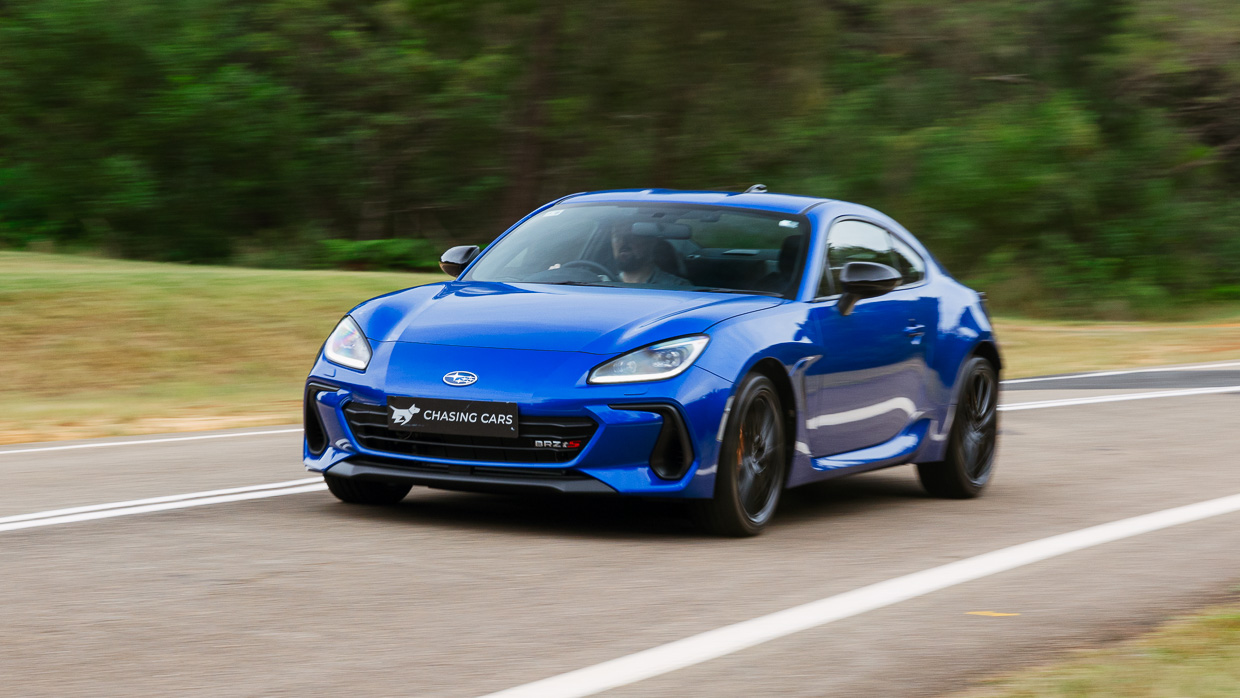
This is because contrary to the Hyundai i20 N we had parked adjacent, the BRZ did not offer automatic emergency braking (AEB) on manual versions. This issue has now been rectified across the entire BRZ range.
Along with forwards AEB, the BRZ has also picked up lane keep assist and adaptive cruise control, driver assistance technologies that will make your life easier when commuting and all performed well in practice. Lane keep will also stay turned off if that is your preference.
Disappointingly, though, reversing AEB still does not feature here unlike on the automatic versions.
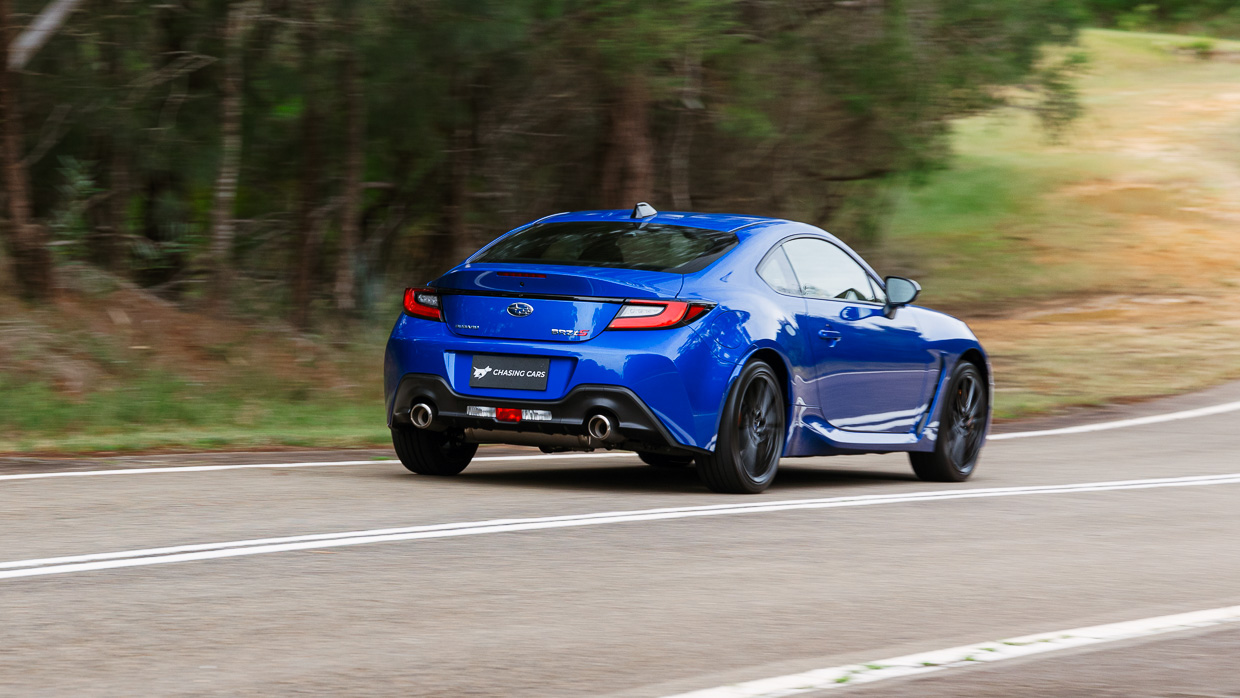
As a car that’s more than likely going to be the pride and joy of its owners, the inclusion of AEB on manual models will inspire some confidence on the rare occasions that you need to hand the keys over to someone with a lesser skill set behind the wheel.
No ANCAP rating has ever been applied to the second-generation BRZ or GR86, but this is the norm in the sports car segment with the MX-5’s rating now expired and Toyota admitting to Chasing Cars previously that its GR products are too low volume to justify such a measure.
Still, the previous-generation BRZ from which it evolved scored five stars way back in 2012 and it’s complete with a basic set of seven airbags and a host of other driver assistance tech like rear cross-traffic alert.
Servicing intervals are surprisingly generous in terms of distance at 12 months or 15,000km, whatever comes first, though if you have any sort of mechanical sympathy, and are driving the BRZ hard often, it would pay dividends to visit the mechanic more often.
Regardless, stick to those intervals and you’ll be paying $2529 over the five-year, 75,000km capped-price period. This price applies to the manual variant, with the auto running a marginal $84 more over the same period.
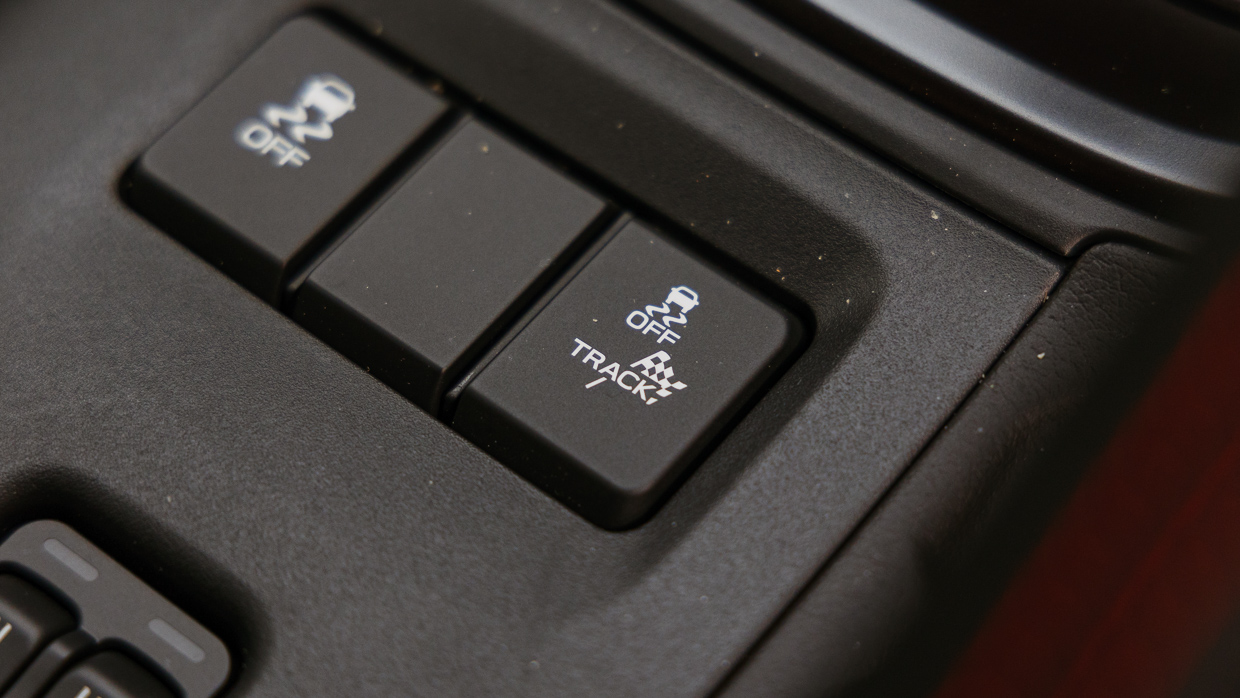
Warranty is the industry standard five-year, unlimited-kilometres duration.
Unlike brands such as Hyundai, Subaru does not offer track-warranty coverage on its vehicles with a spokesperson for the brand providing Chasing Cars with the following statement.
“Subaru’s warranty does not cover use of the vehicle for a purpose or under road or climatic conditions other than for which it was designed, including racing, rallying, speed trialling, hill climbing or similar activities or competitive events,” they said.
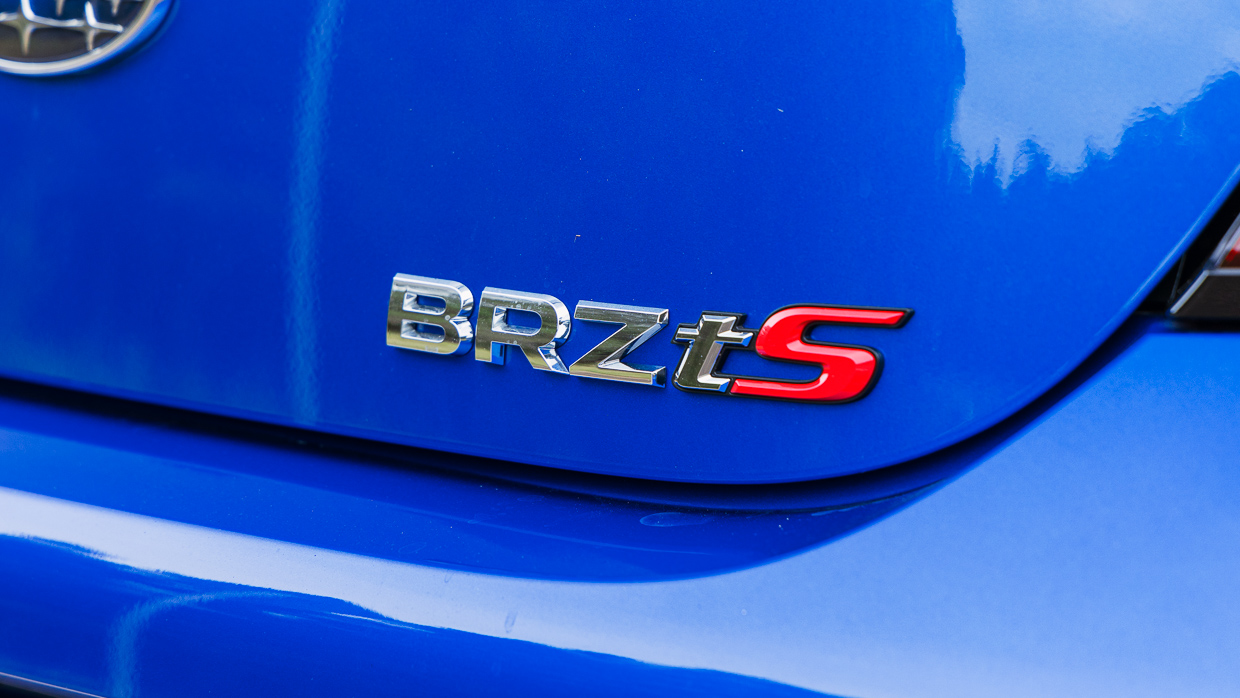
This includes non-timed, non-competitive track use in a disappointing move from the local importer (Inchcape). It’s particularly disheartening for buyers of the tS grade, which features upgrades that would be best appreciated away from public roads in a safer, purpose-built environment.
The BRZ tS has an official combined consumption claim of 9.5L/100km for the manual and 8.8L/100km for the auto, though perhaps we weren’t driving it hard enough as we clocked just 9.0L/100km even after some spirited driving was thrown into the mix.
In urban and highway conditions we saw 11.5L/100km and 6.7L/100km respectively, though usage only spiked to 12L/100km when being hard during performance testing.
The new BRZ tS grade is simply the best version of the BRZ the company has produced so far, not just because it notches up the performance to a meaningful degree but also because it does so for a modest price increase.
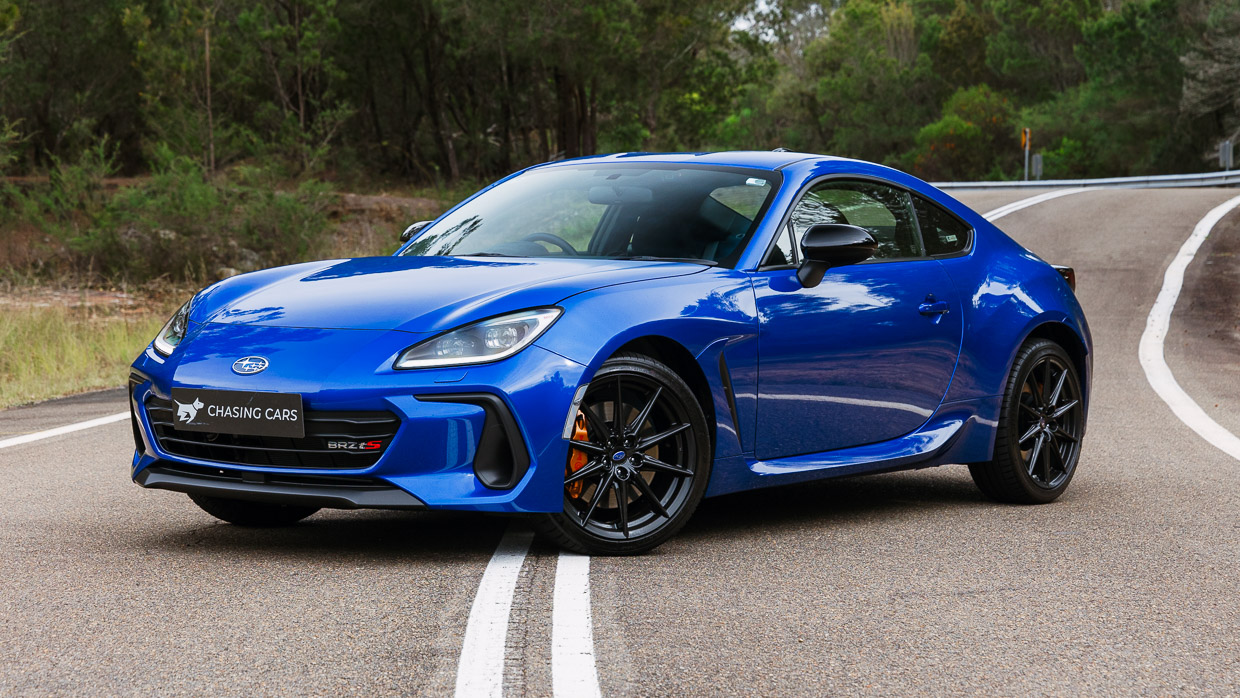
While there are some compromises to the ride quality and the BRZ is more expensive than it has ever been, the sum of the upgrades involved here make a clear and convincing case if you are planning any regular track days or simply prefer a more decisive demeanour than what the regular version offers.
We’ll just continue to hold out hope that Subaru will one day give this coupe the turbocharged engine it deserves, and that would arguably better fit that ‘tS’ badge.
Key specs (as tested)
About Chasing cars
Chasing Cars reviews are 100% independent.
Because we are powered by Budget Direct Insurance, we don’t receive advertising or sales revenue from car manufacturers.
We’re truly independent – giving you Australia’s best car reviews.
The estimate provided does not take into account your personal circumstances but is intended to give a general indication of the cost of insurance, in order to obtain a complete quote, please visit www.budgetdirect.com.au. Estimate includes 15%^ online discount.
^Conditions Apply
Budget Direct Insurance arranged by Auto & General Services Pty Ltd ACN 003 617 909(AGS) AFSL 241 411, for and on behalf of the insurer, Auto & General Insurance Company Limited(ABN 42 111 586 353, AFSL 285 571).Because we don’t know your financial needs, we can’t advise you if this insurance will suit you. You should consider your needs and the Product Disclosure Statement before making a decision to buy insurance. Terms and conditions apply.
Indicative quote based on assumptions including postcode , 40 year old male with no offences, licence suspensions or claims in the last 5 years, a NCD Rating 1 and no younger drivers listed. White car, driven up to 10,000kms a year, unfinanced, with no modifications, factory options and/or non-standard accessories, private use only and garaged at night.
^Online Discounts Terms & Conditions
1. Discounts apply to the premium paid for a new Budget Direct Gold Comprehensive Car Insurance, Third Party Property Only or Third Party Property, Fire & Theft Insurance policy initiated online on or after 29 March 2017. Discounts do not apply to optional Roadside Assistance.
2. Discounts do not apply to any renewal offer of insurance.
3. Discounts only apply to the insurance portion of the premium. Discounts are applied before government charges, taxes, levies and fees, including instalment processing fees (as applicable). The full extent of discounts may therefore be impacted.
4. We reserve the right to change the offer without notice.